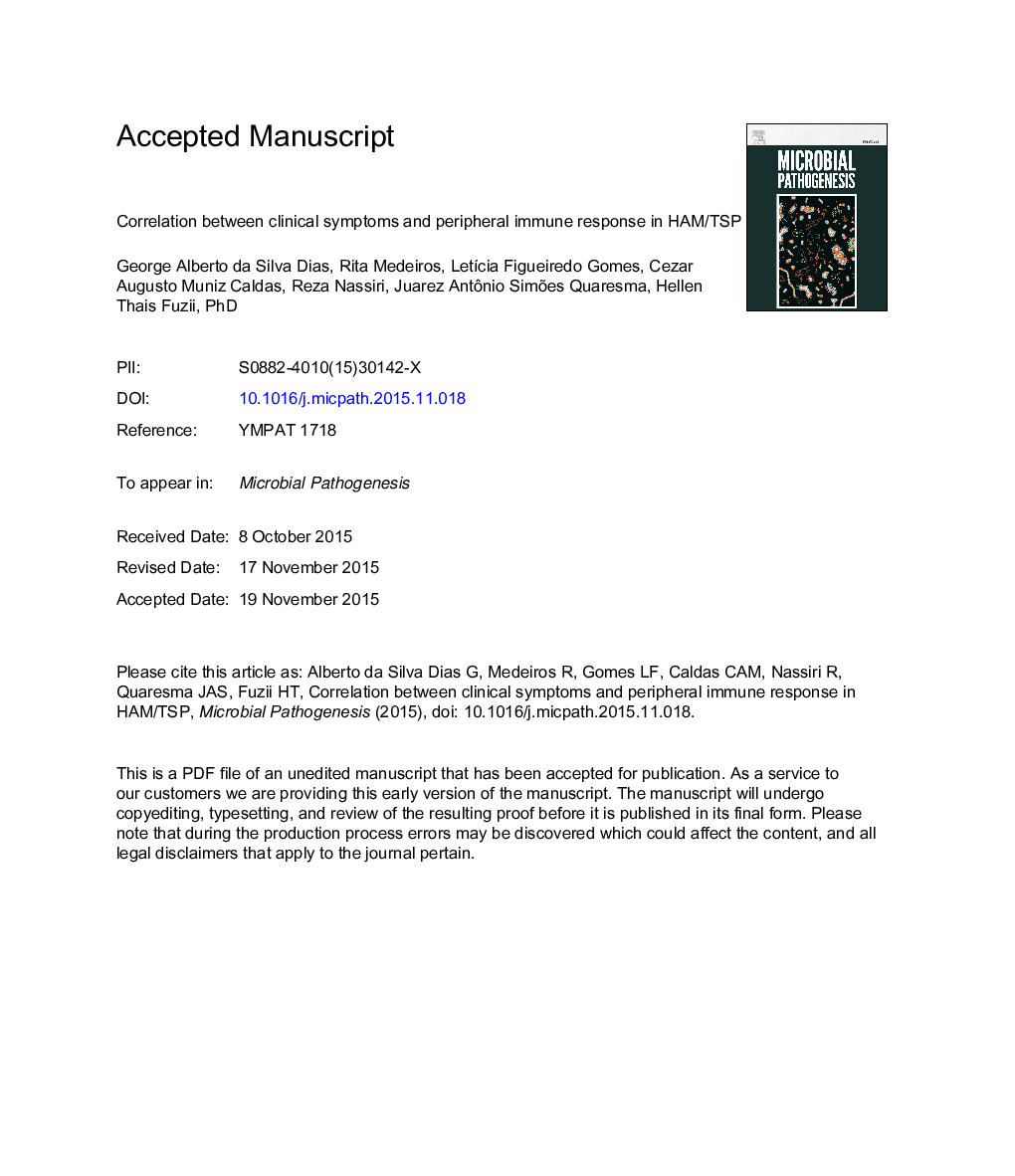| Article ID | Journal | Published Year | Pages | File Type |
|---|---|---|---|---|
| 6136145 | Microbial Pathogenesis | 2016 | 20 Pages |
Abstract
HTLV-1 infects principally CD4+ T cells that are the main reservoirs of the virus in vivo, which play an important role in the immunological response. Most of the infected patients are asymptomatic. However, 2-3% of patients will develop HAM/TSP or Adult T lymphoma. HAM/TSP is a chronic inflammatory disease of the central nervous system, which is characterized by unremitting myelopathic symptoms. Studies have shown that cytokines levels alterations (IFN-γ and TNF-α) were associated with tissue injury in HAM/TSP. The aims of this study were to compare the gene expression of IFN-γ, IL-4 and IL-10 of asymptomatic and HAM/TSP HTLV-1 infected patients, and to correlate the gene expression with those of clinical symptoms. 28 subjects were included, 20 asymptomatic HTLV-1 and 8 with HAM/TSP. Spasticity was evaluated using the Modified Ashworth Scale and the degree of walking aid was classified on a progressive scale. The relative gene expression of IFN-γ, IL-4, and IL-10 was measured by Real-Time PCR. Results showed high gene expression of IFN-γ for all patients, but it was higher among HAM/TSP. A significant correlation was observed between IFN-γ gene expression and the degree of walking aid, and IFN-γ gene expression was higher among wheelchair users compared to non-wheelchair users. No association was found with IL-4 and IL-10. These findings indicate that HAM/TSP patients express higher amounts of IFN-γ than asymptomatic patients, and more importantly, the expression of this cytokine was strongly correlated with the need of walking aid.
Related Topics
Life Sciences
Immunology and Microbiology
Microbiology
Authors
George Alberto da Silva Dias, Rita Catarina Medeiros Sousa, LetÃcia Figueiredo Gomes, Cezar Augusto Muniz Caldas, Reza Nassiri, Juarez Antônio Simões Quaresma, Hellen Thais Fuzii,
